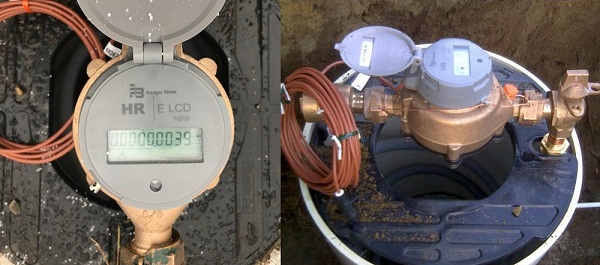Water Conservation in the RDCK - Universal Metering helps to protect our most valuable resource
April 29, 2021
By Dan Elliott, RDCK Communications Coordinator
Water is regarded as one of the most important resources on earth. While considered renewable - clean, fresh water is a limited resource. As a result, the importance of water conservation cannot be overstated. Conserving water means using our water supply wisely and responsibly. This can be done by reducing water waste and improving water management. This is where the Regional District of Central Kootenay (RDCK) comes in.
The RDCK owns and operates 19 water systems. Source water for RDCK water services include various wells, springs, creeks and Kootenay Lake with various levels of treatment. The goal of the RDCK is to promote smart usage of our water and to minimize waste and loss. A solid conservation plan will reduce impacts to the environment and help keep our resources and water infrastructure sustainable for current and future generations.
One way to manage water use is through universal metering. This allows the RDCK to measure the amount of water entering each property to better understand consumption in the area. Currently four RDCK water systems (Balfour, Grandview, Lucas Road and Rosebery Highlands) utilize water metering. The RDCK is proposing universal water metering and distribution upgrades for its largest water system, the Erickson Water System, which derives source water from Arrow Creek. The Arrow Creek water treatment plant services the residents of the Erickson community and the Town of Creston.
Jason McDiarmid, the Utility Services Manager for the RDCK has been with the organization since 2011. He oversaw the Balfour Water System transition to universal metering and believes the time is now for the Erickson Water System to make the change. “Water demand in the Erickson Water System has been a concern for a number of years. Consumption is increasing and the infrastructure is aging. By switching to a water metering system, we will improve water conservation, improve leak and water loss detection, increase the life span of our equipment and water infrastructure, provide more equitable water rates, and be able to provide valuable consumption data.”
In late 2018 and early 2019, meters were installed in the Balfour Water System. Data collected in 2019 and 2020 demonstrated a 22% reduction in overall consumption. In fact, it was determined that 10% of the customers consumed 50% of the water, a good portion of which was water waste and leakage. Previous capacity concerns have now been mitigated and the development moratorium lifted. This allows for increased revenue for the system through development infrastructure charges and more rate payers.
 Water meters – photo courtesy RDCK
Water meters – photo courtesy RDCK
The rationale for changing to a metering system is either based on economics or the system can’t supply enough water. There is large demand in the Erickson Water System and with annual hot and dry summers the potential for exceeding plant or creek capacity is always there. A result the RDCK would prefer to avoid.
“The Arrow Creek treatment plant operates at emergency capacity for long periods of time during the summer, with all pumps running 24 hours a day,” said McDiarmid. “It would be impossible to keep up with the demand if just one component of the system fails, resulting in water shortage during drought conditions. At times we have even had to reduce flow through the plant to about 60% of plant capacity in order to maintain any creek flow.”
Agriculture is the biggest user of the Erickson Water System. Water Conservation measures have never been applied to the agricultural sector due to the potential for economic loss and damage to fruit trees and berry bushes; however, that could change if water demand is not managed.
“The implementation of a metering system could prevent the necessity for stricter conservation measures in the future, which if needed, could drastically affect the entire agricultural industry,” said McDiarmid. “Metering will allow us to understand total consumption, find leaks in the water system, particularly on private property, and help to avoid low stream flows or low levels in water storage reservoirs, especially during drier months.”
As for the cost, metering is based on rate equity. If you use more, you pay more. A reasonable average customer will likely pay less, while excessive users will pay more. The rates will be determined in consultation with the Erickson Water Commission and the public, based on priority goals (water conservation and a secure water source for food security and economic development, as an example). The commission and staff then provide their recommendations to the RDCK Board of Directors for approval.
It is imperative organizations like the RDCK are proactive to ensure water conservation is a priority, not only for today, but for generations to come. Living in the Kootenays, residents are witness to the beauty of nature and the vastness of its natural resources on a daily basis. It is easy to take for granted, but if we take action now, hopefully we can ensure the creeks will never run dry.
Click here for a print-friendly PDF version.
The content on this page was last updated April 29 2021 at 8:10 AM
